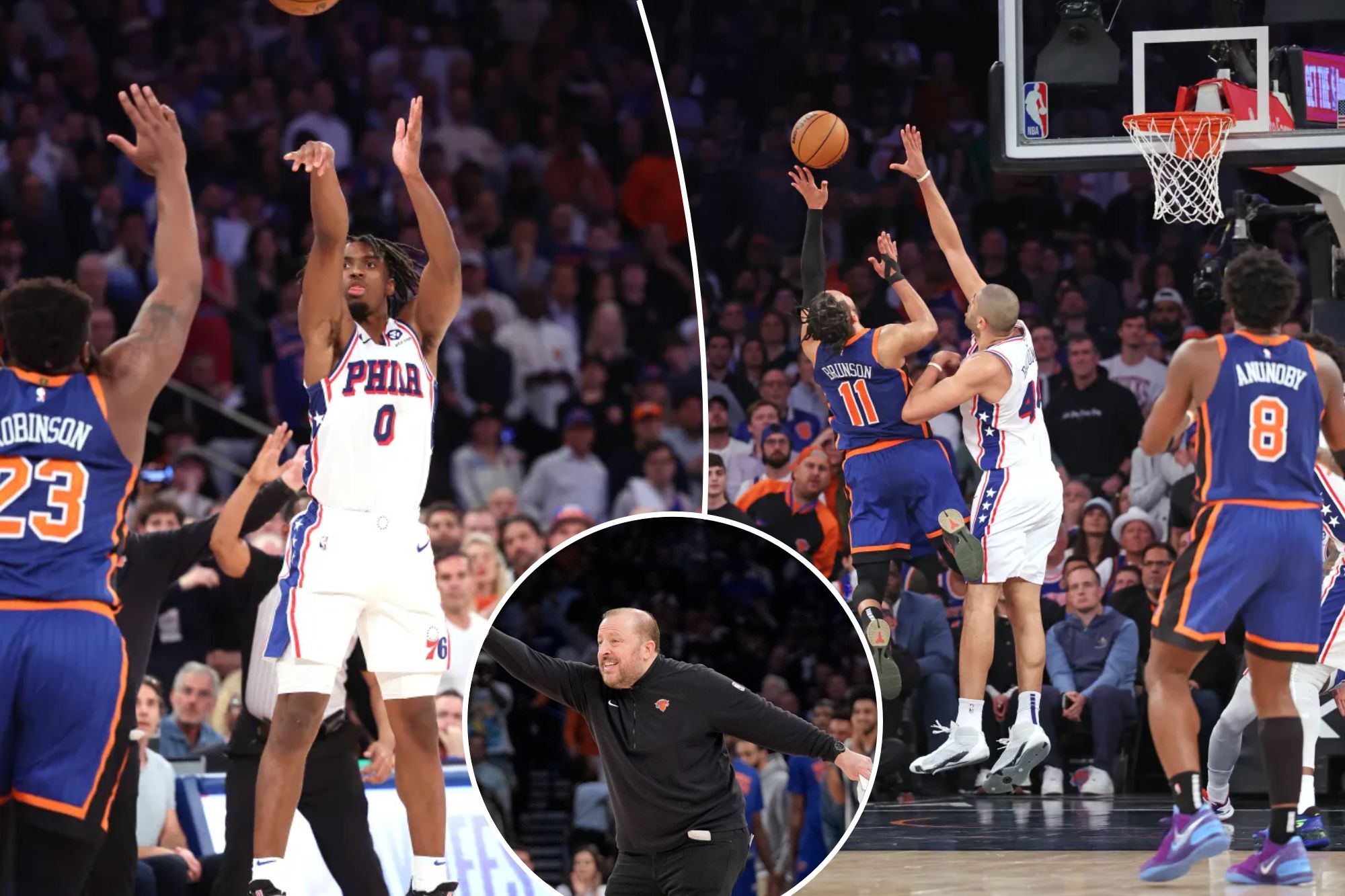
To foul or not to foul with a three-point lead in the closing seconds often is a conundrum for NBA coaches, and Tim Thibodeau is no different.
After declining to do so following Donte DiVicenzo’s go-ahead 3-pointer and OG Anunoby’s two free throws in the closing seconds of Game 2, Thibodeau and the Knicks all talked about a “miscommunication” over whether to foul Sixers gunner Tyrese Maxey before his game-tying trey with 8.1 seconds remaining in the fourth quarter of the Knicks’ overtime loss Tuesday night in Game 5.
Thibodeau allowed that the Knicks “could have” fouled in that situation, but after initially adding “we’ll leave it at that,” he later explained that the players on the floor needed to be aware of the different scenarios with Josh Hart on the line with a chance to put the Knicks up by four with 15.1 seconds remaining.
Hart missed one of two and Maxey launched a 34-footer to even the score.
“What you have to do is, they’re out of timeouts, so they are going quick. But you also have to read what’s happening,” Thibodeau said. “Is [Hart] he making both? That puts you up four. Is he making one? That puts you in a different situation. If he misses both that puts you in a different situation.
“So you’re communicating that to your players, but also, you’ve got to make sure that that’s being communicated to people [waiting to rebound] on the [free-throw] line, too. That’s where our communication has to be better. If you miss two and you say foul, everyone’s got to be aware and alert to what’s going on.”
Hart, who stressed he had to “take it on the chin” for missing the free throw, said the fouling miscommunication “was an error on the guys on the court,” adding, “We gotta make sure we know what the situation is.”
Miles McBride was the primary defender on Maxey as he brought up the ball and the closest to him when he launched his shot.
“Just end-of-the-game management, we just all should’ve been on the same page, talking, communicating a lot more. He just made great shots,” McBride said. “Obviously a split-second decision when we should’ve been talking about it during the free throws.
“I think when he’s coming at you full speed, he hit a close-to-half court shot, it’s not much you can do. You don’t want to take a chance where he might go into a shooting motion. Probably should’ve been up on him a little bit more. But you just learn from it.”














